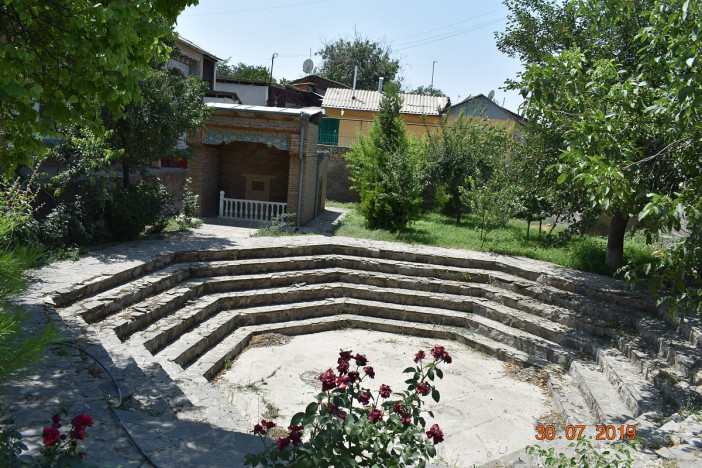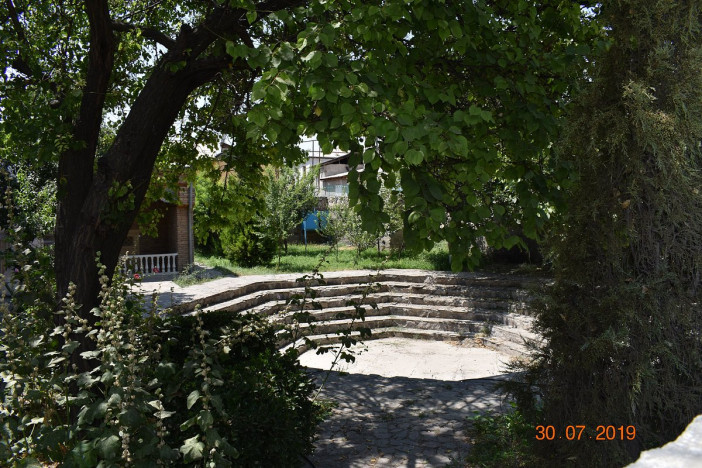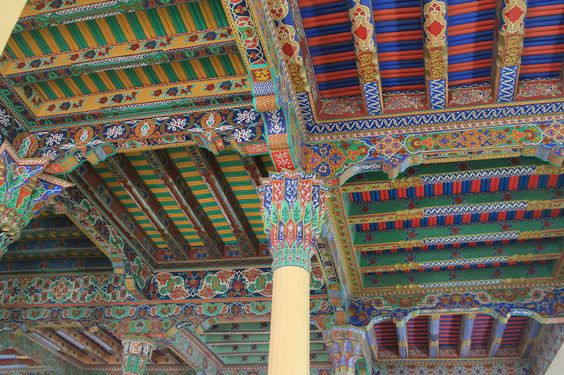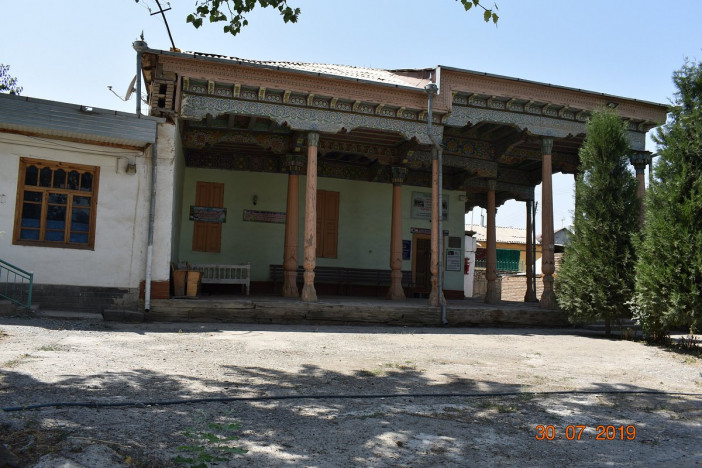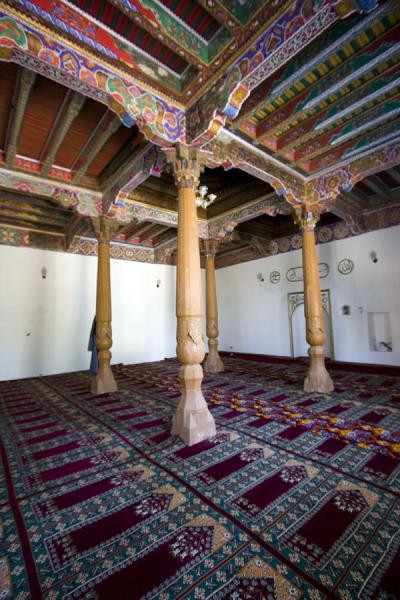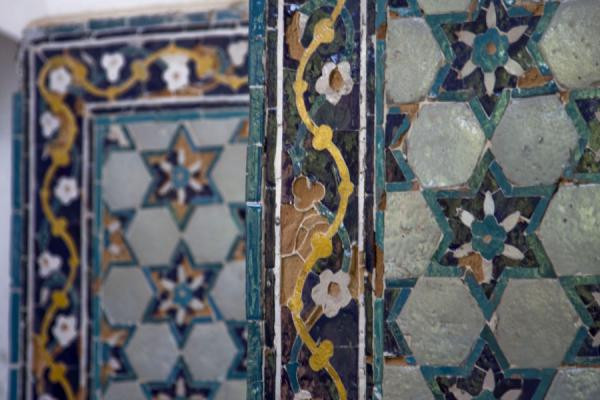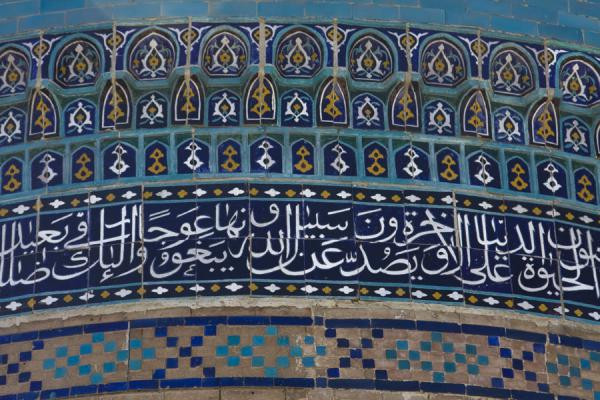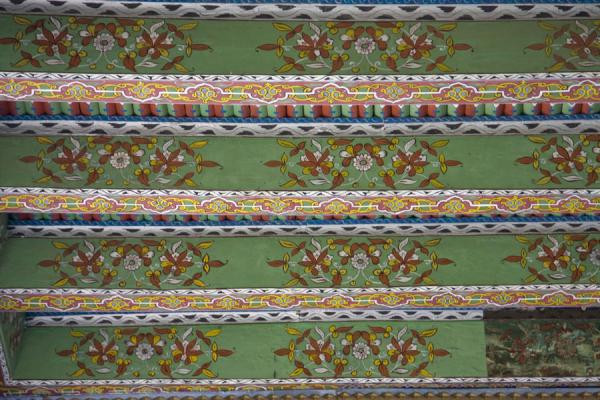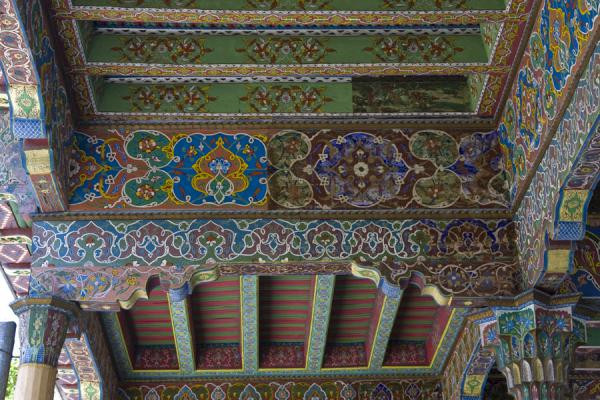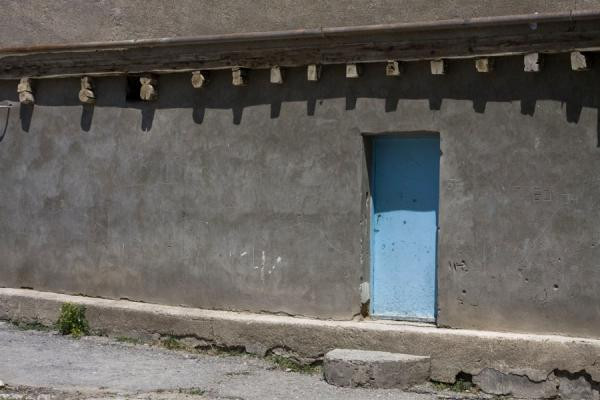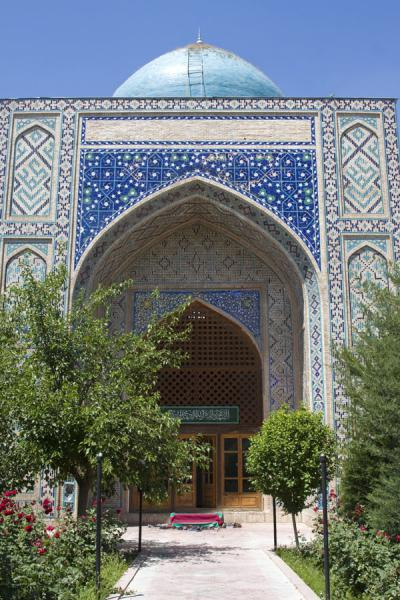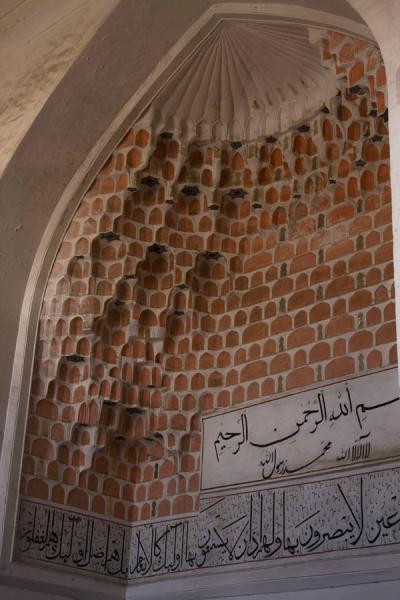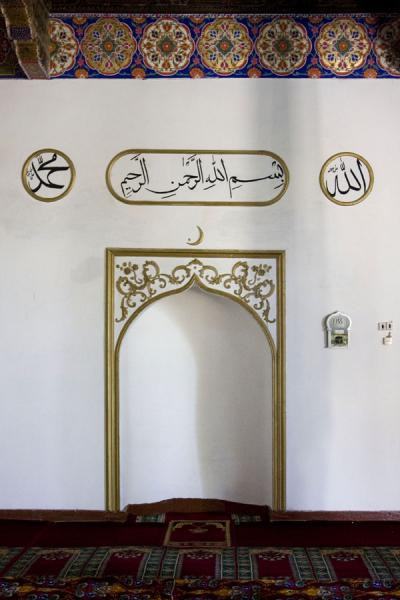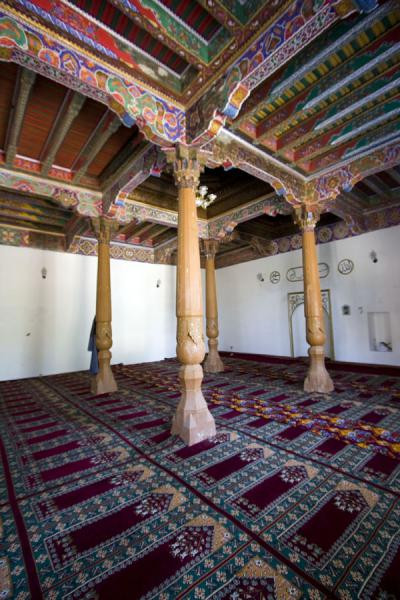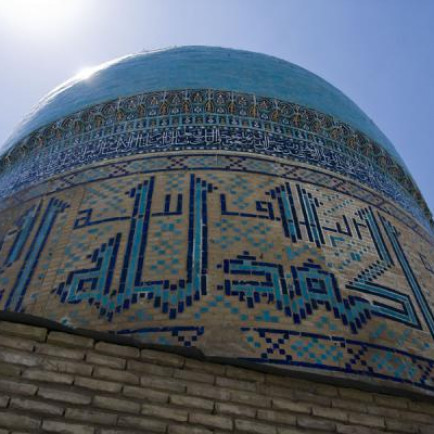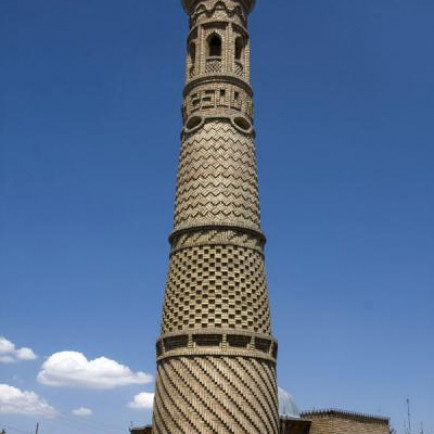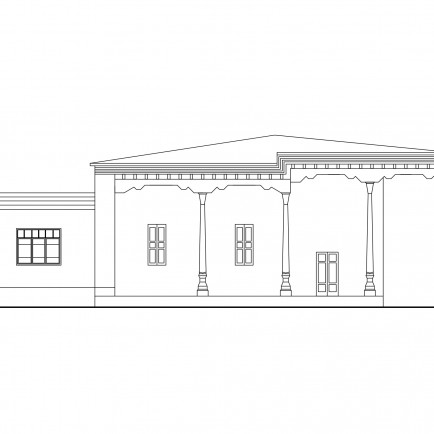Sangin mosque
History
The oldest monuments of Hissar - Stone Mosque of Sangin
One of the most interesting monuments of the Gissar historical and cultural reserve is the domed Mosque of Sangin. This monument of architecture is not only one of the most interesting, but also one of the oldest. It is also found not far from the Hissar Fortress.
The construction of the Sangin Mosque started in the XII century and lasted till the XVI century. The mosque’s name is translated as “Made of stone”. Its name is connected with one of the unique features of the building. The mosque’s lower masonry is laid with stone blocks to half of its height. A local legend is connected with the Sangin Mosque. The Sangin Mosque is believed to be built in the VII century by the order of holy caliph Umar.
Urban and Architectural
The mosque is a square building with an entrance portal. Inside the mosque there is a traditional courtyard. The mosque itself is located opposite to the portal. The entrance portal is skillfully decorated with inscriptions and paroemias from the Koran. The mosque by way of represents a crosswise composition - chortok, formed due to deep arch niches on four parties dome a square (5.5 х 5.5 meters). Wooden pillars and colourful painted ceiling of Hauz-i-Sangin mosque
Description
A unique feature of the mosque is four bottomless jugs, immured under the mosque’s dome. The jugs act as resonating holes, designed to improve the acoustic features of the hall for prayers and sermons.
One of prominent features of a mosque is a device of four resonators at a level domes designs, in the form of ceramic jugs without the bottoms walled in thickness of a bricklaying tromps.
The resonator served for improvement of acoustic qualities of a voice. In the western party of a mosque there is mikhrab, the arch niche specifying a direction of Mecca. To the right of mikhrab the step minbar for the sermon is erected.
The name of a mosque is connected with its design - walls on half of height are combined from red sandstone. The top part from burnt a brick. The mosque is restored in 1986 - 1987 of the last century.
References
https://www.advantour.com/tajikistan/hissar/sangin-mosque.htm https://www.tripadvisor.com.eg/Attraction_Review-g2227940-d20323665-Reviews-Hauz_i_Sangin_Mosque-Istaravshan_Sughd_Province.html#/media-atf/20323665/455860059:p/?albumid=-160&type=0&category=-160 . http://www.traveladventures.org/continents/asia/istaravshan-old-town03.html
Details
الموقع
FHJV+VHW, Unnamed Road, Hisor, Tajikistan
تاريخ البناء
the VII century
الرسومات المعمارية
الخريطة
History
The oldest monuments of Hissar - Stone Mosque of Sangin
One of the most interesting monuments of the Gissar historical and cultural reserve is the domed Mosque of Sangin. This monument of architecture is not only one of the most interesting, but also one of the oldest. It is also found not far from the Hissar Fortress.
The construction of the Sangin Mosque started in the XII century and lasted till the XVI century. The mosque’s name is translated as “Made of stone”. Its name is connected with one of the unique features of the building. The mosque’s lower masonry is laid with stone blocks to half of its height. A local legend is connected with the Sangin Mosque. The Sangin Mosque is believed to be built in the VII century by the order of holy caliph Umar.
Urban and Architectural
The mosque is a square building with an entrance portal. Inside the mosque there is a traditional courtyard. The mosque itself is located opposite to the portal. The entrance portal is skillfully decorated with inscriptions and paroemias from the Koran. The mosque by way of represents a crosswise composition - chortok, formed due to deep arch niches on four parties dome a square (5.5 х 5.5 meters). Wooden pillars and colourful painted ceiling of Hauz-i-Sangin mosque
Description
A unique feature of the mosque is four bottomless jugs, immured under the mosque’s dome. The jugs act as resonating holes, designed to improve the acoustic features of the hall for prayers and sermons.
One of prominent features of a mosque is a device of four resonators at a level domes designs, in the form of ceramic jugs without the bottoms walled in thickness of a bricklaying tromps.
The resonator served for improvement of acoustic qualities of a voice. In the western party of a mosque there is mikhrab, the arch niche specifying a direction of Mecca. To the right of mikhrab the step minbar for the sermon is erected.
The name of a mosque is connected with its design - walls on half of height are combined from red sandstone. The top part from burnt a brick. The mosque is restored in 1986 - 1987 of the last century.


